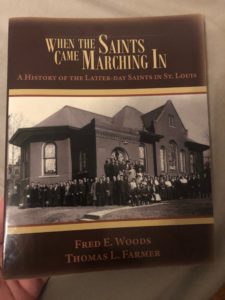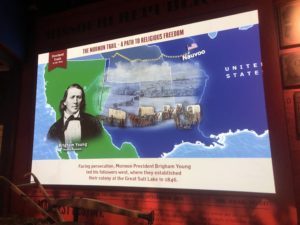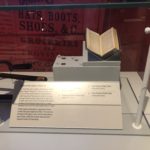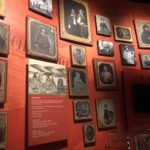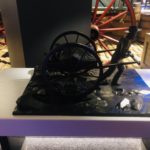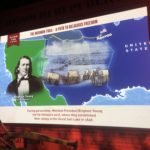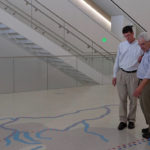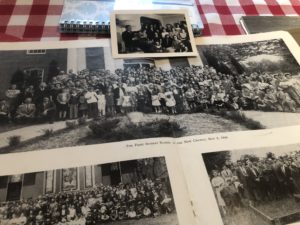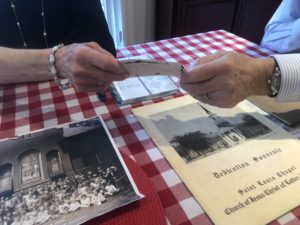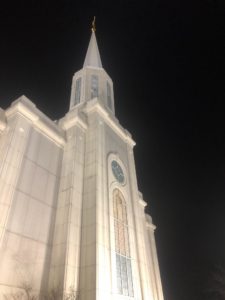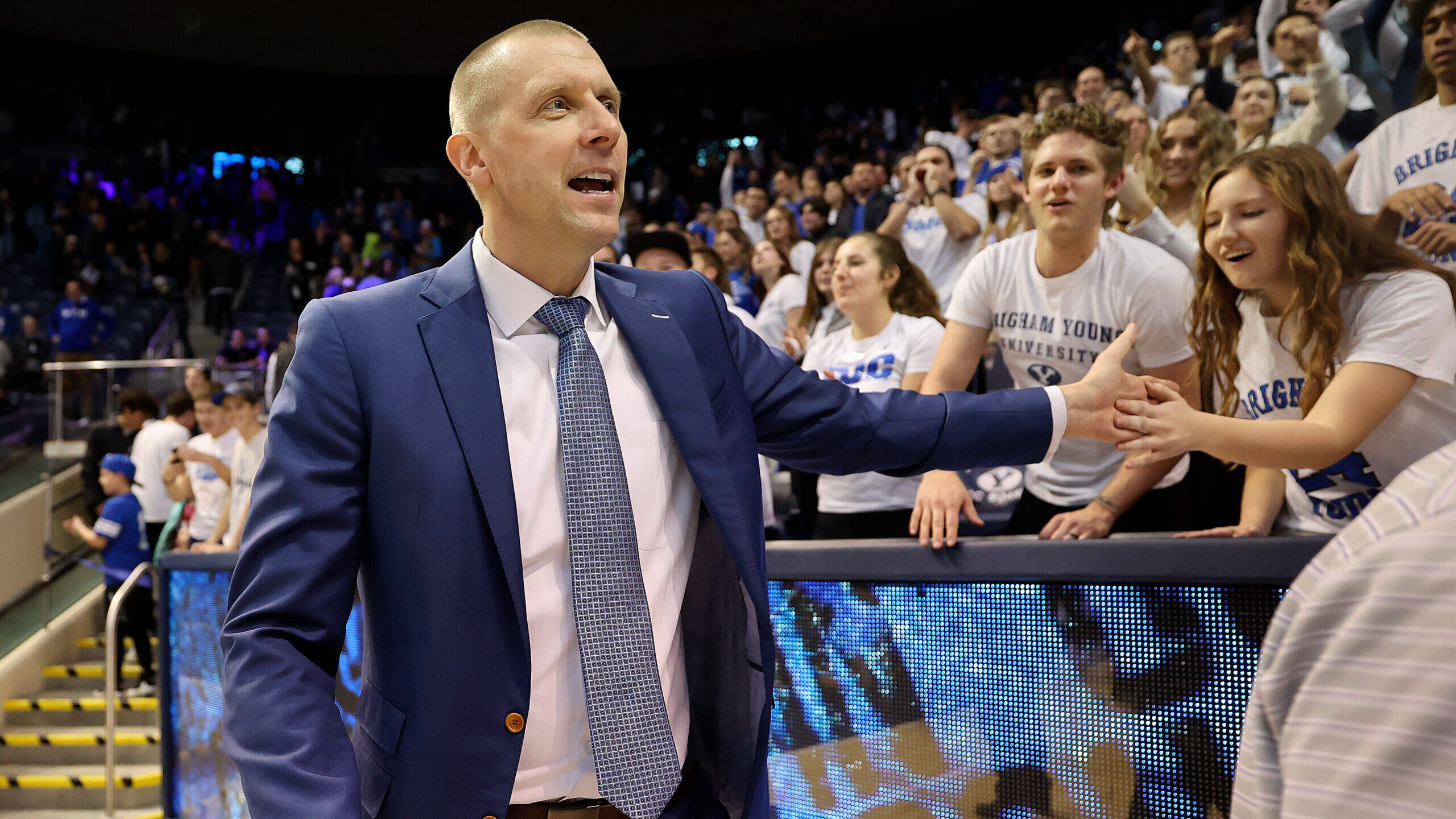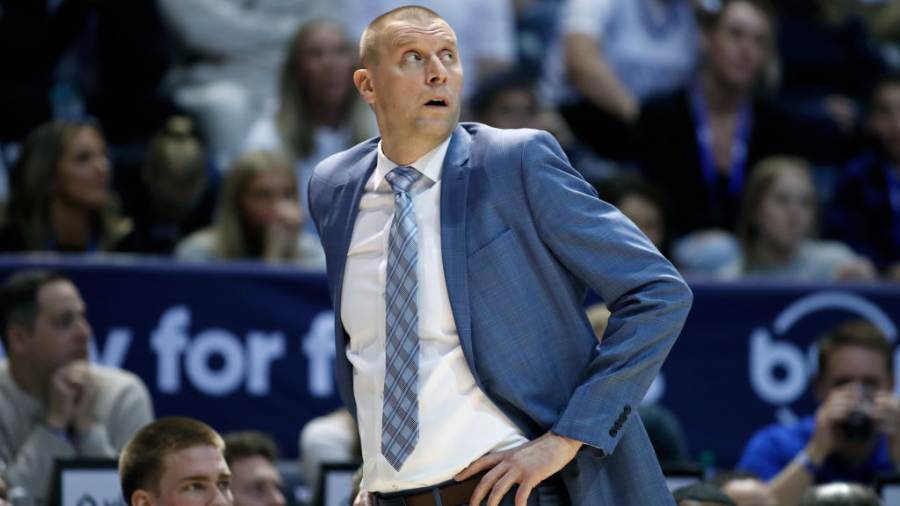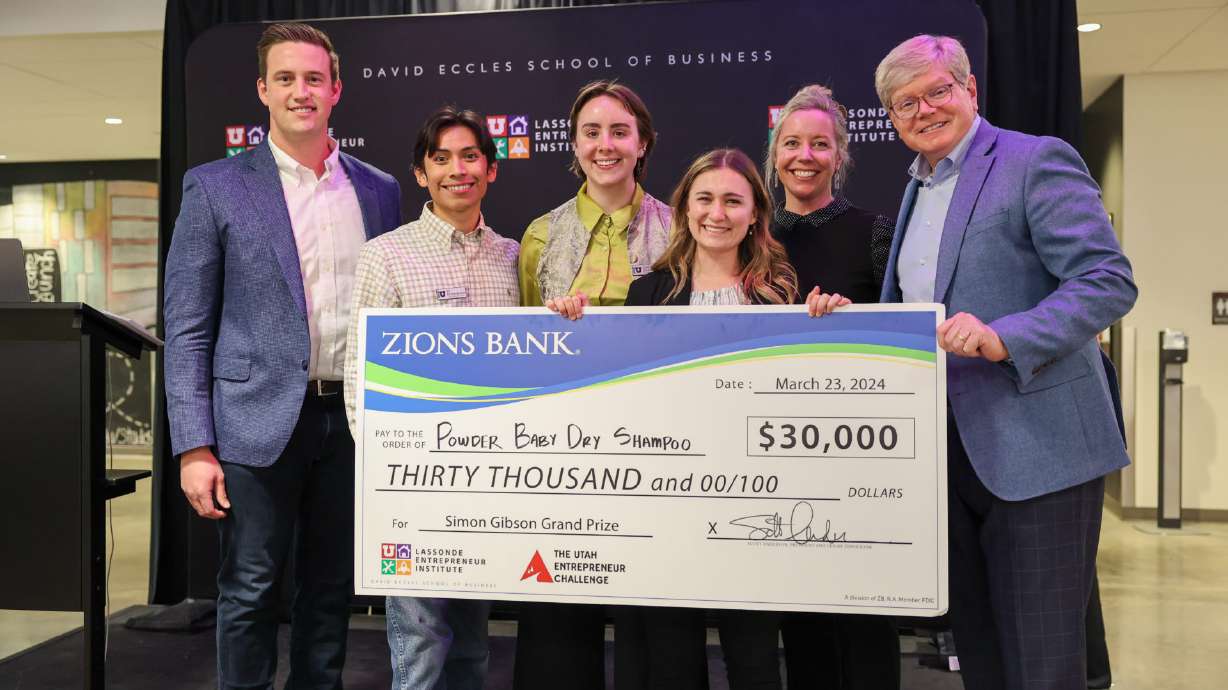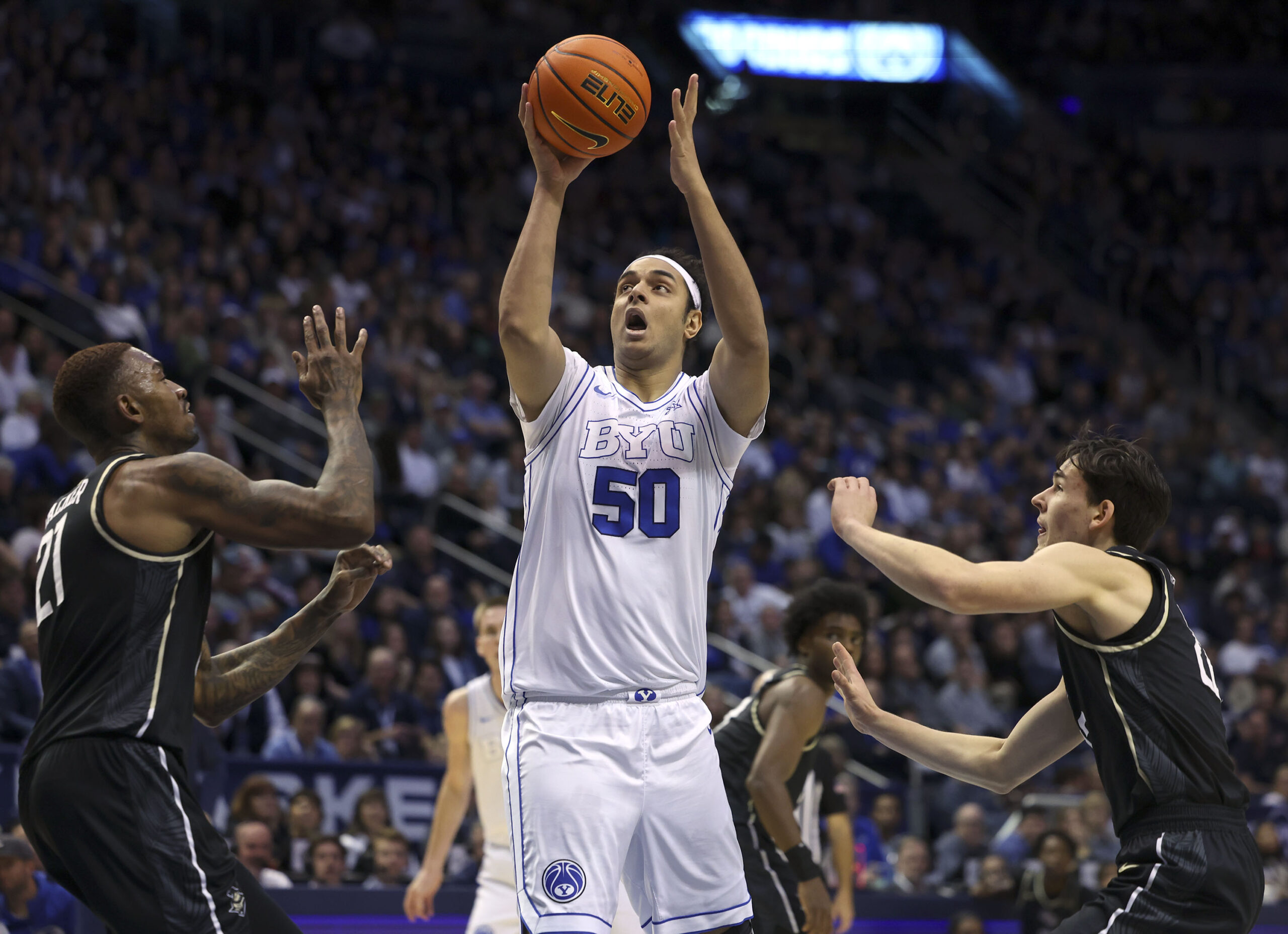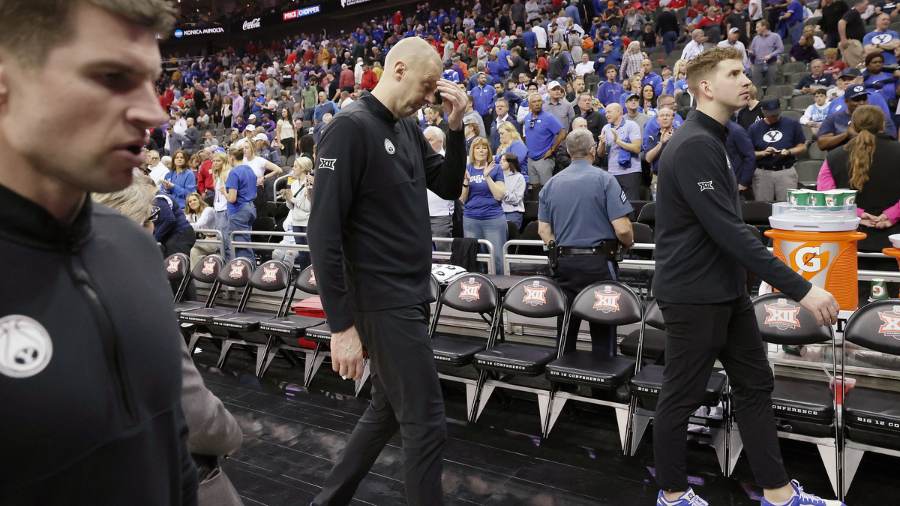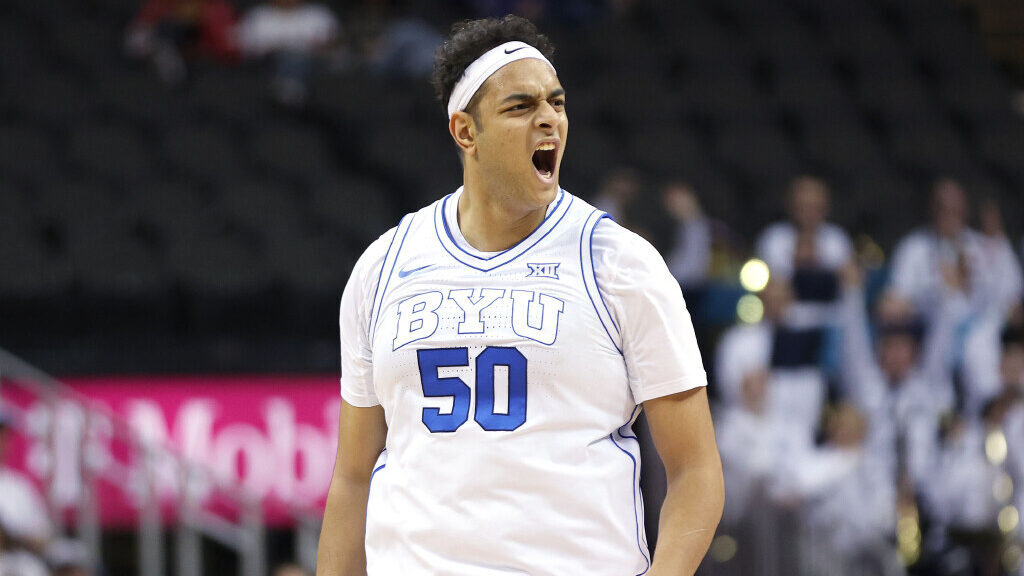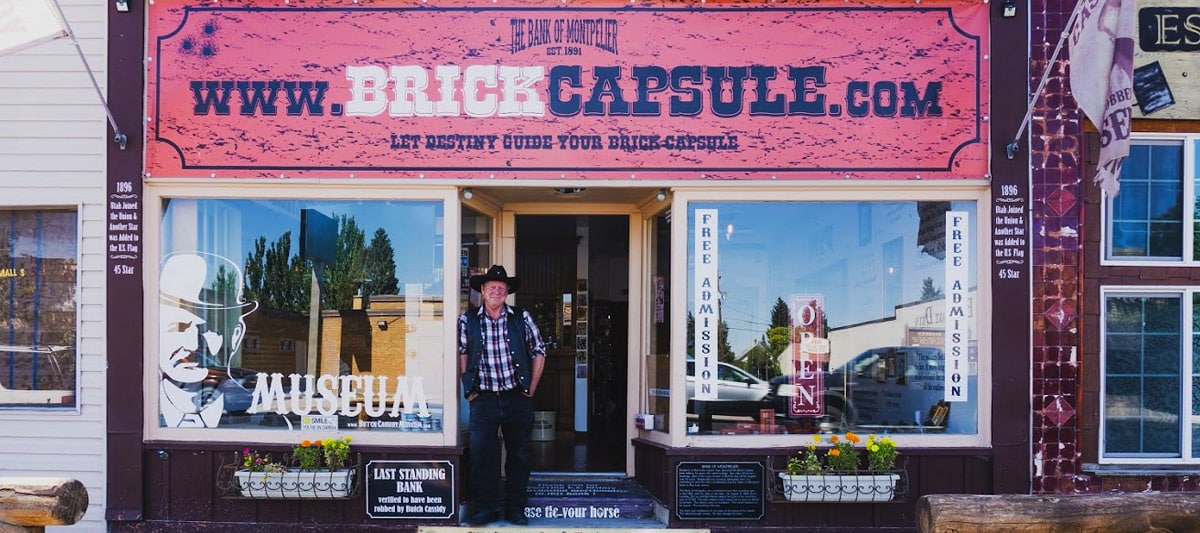The Saints in St. Louis: connecting Missouri to modern Latter-day Saints
Apr 7, 2019, 1:00 PM | Updated: Apr 8, 2019, 9:41 am
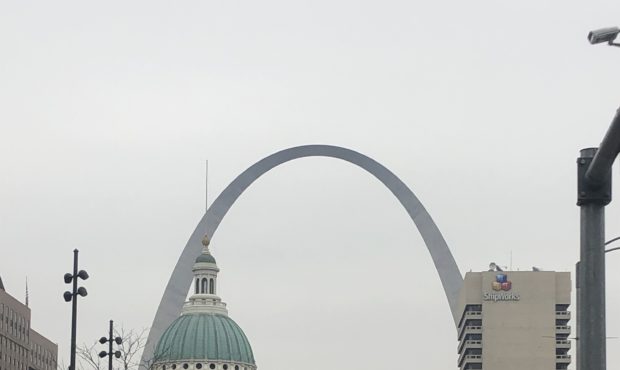
A view of the Gateway Arch in St. Louis. Photo: Mary Richards
ST. LOUIS — When you mention Missouri and the Church of Jesus Christ of Latter-day Saints, you may think of the 1830s in Jackson County, Hauns Mill, mobs, violence, and the extermination order.
In the eastern part of the state of Missouri, however, in St. Louis, it was a completely different story. The early Saints found safety and support. Newspaper articles decried the governor’s extermination order, and were positive about the Church and its members — their neighbors.
“And yet, the St. Louis story is not widely known,” said BYU Church History Professor Fred Woods, the co-author of “When the Saints Came Marching In: A History of the Latter-day Saints in St. Louis.”
Woods says in the 1830s, 40s and 50s, thousands of early Church members traveled to or through St. Louis, where they found peace.
“It’s a difference in day and night from the western part of the state,” said Woods.
In all, 22,000 of the 70,000 early Mormon pioneers came west to Utah through St. Louis between 1846 and 1857. It was designated as the trailhead by Brigham Young for a time.
There were even enough members in eastern Missouri to form the St. Louis Stake in 1854 — the 16th stake of Zion and one of only two stakes outside of Utah territory.
Gateway Arch Museum
The new and expanded Gateway Arch Museum opened in February 2018 in St. Louis, and millions of visitors now see the peaceful relationship between early Church members and the St. Louis community.
Woods’ co-author, Tom Farmer, a local historian for the Church of Jesus Christ of Latter-day Saints, worked for years on this project with Bob Moore, a historian at the Gateway Arch National Park.
Their friendship strengthened as they gathered stories and exhibit materials on the Church members in St. Louis, to place alongside the stories of many groups and peoples who passed through St. Louis as a starting point for treks west.
“It’s always been my thought that the Church’s story is not told in context with the westward movement. It’s always told separately,” said Moore.
But this time, he said, they wanted to intertwine the stories of every group.
A coordinated effort
On the floor of the museum, as you come in, is a huge map showing the many westward trails out of St. Louis, like the Mormon, California, Oregon, Santa Fe, and Lewis and Clark Trails.
Tall displays show videos re-enacting the treks west, including scenes filmed at Martin’s Cove, Wyoming.
“The Church lent those costumes and everything,” said Farmer.
“This would not have been possible without the help of the Church,” agreed Moore, explaining how the Church history department and archivists were instrumental in providing knowledge and materials, plus all the epic movie-making support, from costumes to wagons to draft animals and actors and extras.
Moore and Farmer say the days filming were among some of their best memories.
As they walked through the museum, they explained how St. Louis played a crucial role in the Saints’ journey to the Salt Lake Valley. The story is told throughout the exhibits, pictures, replicas, sculptures, dioramas, music, video, and interactive displays.
There’s even a Nauvoo-era edition of the Book of Mormon, under glass.
St. Louis and family history
“The Church is so big on family history, a sizeable people in the Church if they look at their own history, I am sure they’ll find out their families came through St. Louis, and St. Louis was an oasis and a sanctuary for their family,” said Farmer.
“In 1849, there were three to four thousand members of the Church who were here from England, and many buildings in this area have the results of their efforts they did,” said Farmer.
Farmer says English immigrants moving west to join the church provided the growing city with assets that helped the region thrive: skilled laborers who could speak the language and were willing to work hard.
“And the community welcomed them,” he added. “We’ve seen articles about, ‘These are our wonderful neighbors.'”
President Thomas S. Monson’s great-grandmother Margaret Miller traveled up the Mississippi River with her family in the spring of 1848, and stopped for a time in St. Louis on the way to Utah. And Henry B. Eyring of the First Presidency had a great-grandfather, Heinrich Eyring, who was baptized on March 11, 1855, in St. Louis, Missouri, after a co-worker introduced him to the gospel.
There are pioneer families who have members buried in the Bellefontaine Cemetery in the city starting from 1849.
By June 1857, the epidemic of cholera forced the ports to close, and the St. Louis Stake eventually disbanded when almost all the leaders moved west. But that was not the end of the church’s connection to St. Louis.
A time of change and growth
President M. Russell Ballard’s grandfather served as a missionary in St. Louis in the 1890s, Woods said.
In 1893, the Mormon Tabernacle Choir boarded train cars at Salt Lake City’s Union Pacific Station to embark on their first out-of-state tour. One of the stops was a concert in St. Louis.
Just over ten years later, Woods said Utah had a building during the 1904 Louisiana Purchase Exposition, more commonly referred to as the St. Louis World’s Fair.
Then, in 1915, a young missionary named Spencer W. Kimball was assigned to labor in St. Louis. Farmer, a third-generation member of the church, has a personal connection to that development.
“My mother’s mother was here when Spencer W. Kimball served his mission here,” Farmer said.
“He was the missionary who converted my mother’s family,” said lifelong St. Louis resident Linda Oscarson. Her father’s family came to the city in 1918.
“My grandfather, Angus T. Locheed Senior, came from Scotland, and they raised their family here, but there weren’t many members here at the time,” said Linda.
“As we move into the 20th century, we have Latter-day Saints going out from Utah to various cities, and one catalytic family is the Roy Oscarson family. He went out as a general shoe manager in 1943. He sees the dilapidated Maple Avenue Chapel, and things, we need to do something about this,” said Woods. “He’s very influential, he’s connected, and business people in the region really respect him.”
Roy’s son is Dick Oscarson, Linda’s husband.
“When Roy got off the train, it was August, and hot and humid. He thought, ‘How can I ever bring my family here?’ but he went to church on Sunday, and got invited to dinner by a cute friendly Scotsman – my grandpa. And he thought, if there are more people like this here, then I can bring my family here,” said Linda. “That was the beginning, and it culminated when Dick and I got married in 1958.”
Roy Oscarson, was called as a stake president in 1958, when the St. Louis stake was organized for a second time. His family says the elder Oscarson helped acquire eight to ten new chapels for the church in the area.
Linda and Dick Oscarson laid out photos of their family history on a red-checkered tablecloth on their kitchen table in West St. Louis County, showing the different buildings, including the beautiful Jamieson Chapel in 1949, the finest chapel between Utah and DC at that time.
“Then we felt like we were really in church,” said Dick.
Roy’s company wrote a letter, praising the building and the Saints in the area: “Your beautiful new church is a credit to our community, and a splendid contribution,” it read.
“It was a handful of faithful Saints who stuck it out, and saw the Church grow,” said Dick.
And during all of this, the haven and peace that the early Saints had felt in St Louis, continued.
“St. Louis has always been very friendly to the church,” said Dick. “We have been very happy here.”
That happiness became complete, he said, with the dedication of the St. Louis Temple in 1997.
“We were astonished. We never thought we’d get a temple in our lifetime,” said Linda.
A temple in St. Louis
The St. Louis Temple sits on a hill, in Town and Country, near busy Highway 40 into the downtown area, in a peaceful spot where cars are visible but not audible.
Woods described the building of the St. Louis Temple as an important milestone in Latter-day Saints history in Missouri.
“You have the chapels being built; the Jamieson chapel was a statement that we are here to stay. And from that, you see other buildings, beautiful buildings being built, but it’s the temple that sends a message that is very important,” said Woods. “To me, the capstone is when St. Louis receives its own temple.”
Menlo Smith, a prominent Missouri businessman as well as a Latter-day Saint who graduated from the University of Utah, was instrumental in the whole site-selection and building process throughout the 1990s. He became the temple’s first president.
“I showed President (Gordon B.) Hinckley the various sites, and saved the best one till the very last, and drove onto this promontory. He got out of the car, he looked around, and he said, ‘Menlo, this is where the temple is going to be. You get busy and buy this property,'” said Smith.
Smith said at every turn, they had miracles happen.
At the final city council meeting during the approval process in the early 90s, the architect took the cover off the rendering at a city councilman’s request.
“The whole room just gave a big sigh of amazement, and was quiet for what seemed like 5 minutes,” said Smith. “The councilman slapped his hand down on the table and said, ‘I am not going to move approval of this project!’ and we were dismayed. But he paused and said, ‘I am going to move enthusiastic and unanimous approval of this project!’ It brought cheers to the entire room.”
The land came from the Missouri Baptist College, and Smith said they were extremely helpful from the purchase to the open house and dedication.
“President Hinckley was astounded we never had a stitch,” he said.
250,000 people attended the open house — so many, in fact, church officials had to extend the open house period to four weeks, including Sundays.
Smith said the temple was and is a guiding light for the community.
“The airplane pilots use it as a signal to line up for the St. Louis Airport. And it’s hard to find a person in St. Louis, members and non-members alike, who is not aware of what that building is,” he said.
St. Louis and the church today
According to the Church of Jesus Christ of Latter-day Saints, as of early 2019, there are now more than 18,000 church members in the St. Louis area.
Woods says his family was immediately embraced when they moved there for his work at University of Missouri St Louis. His children were going to a Catholic school, and on the first day, the Catholic sister showed the whole class where Utah was on a map and helped his children feel welcome.
“The key to St. Louis is the friendships that have been developed through inter-faith partnerships. It’s a wonderful thing. People who are looking for the common ground, instead of battleground; brotherhood and cooperation,” he said.
He points to the friendship between Farmer and Moore at the Gateway Arch Museum as an example: “It is like a friendship (or Arch) connecting Bob and Tom or the Church and the St. Louis community.”
“St. Louis has always, how shall we say it? It’s a town that supports other people’s religion,” said Farmer as he sat next to Moore on a bench in the museum. “It’s not the Mormon temple, it’s the St. Louis temple. This is everybody’s museum, it’s everybody’s park.”
“There seems to be a lot of divisiveness in the country today,” said Moore. “One way to diffuse that is to learn from the history of the past. Yes, there were divisive times, and groups that were antagonistic toward each other, but there was cooperation and groups that helped each other, and groups that tolerated each other. This story we try to tell here is one of tolerance and attempts at understanding.”
And a final message from the Oscarsons?
“I say, bloom where you are planted,” said Linda.
She said in every area, there has been someone or someones who built the Church. “They became as teenagers our idols. They played a big part in the growth of the Church here. Each of us can be that for others, and for our youth.”
Listen to the full special through the Conference Conversations podcast below.


